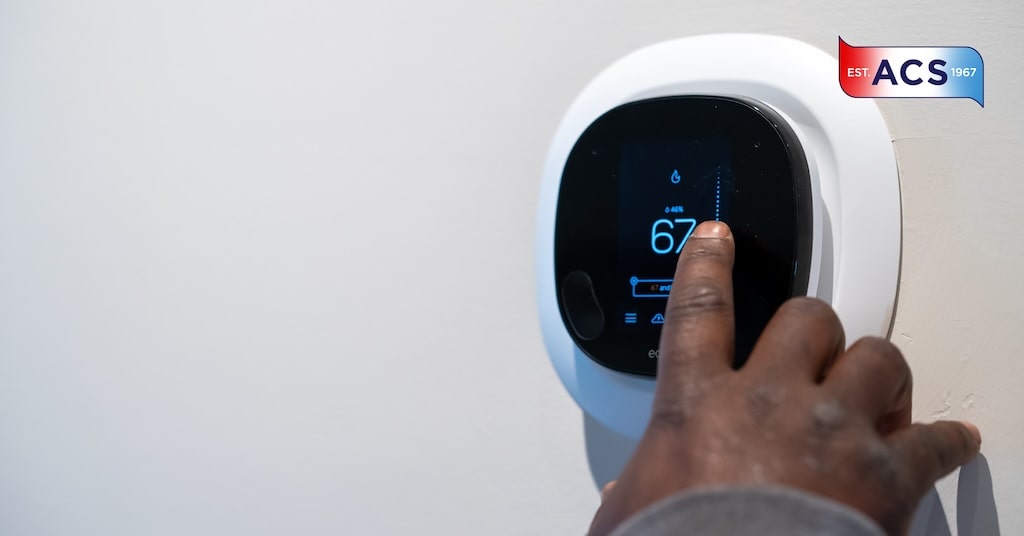It’s officially the time of year when outdoor temperatures are dropping, and homeowners are cranking up the heat. While taking measures to stay warm is expected, HVAC users should be mindful of their energy consumption throughout the winter season.
With the proper HVAC knowledge and understanding, you can reduce energy consumption and save on utility costs this winter. At ACS, we offer premium heating services and exclusive industry intel so you can stay warm without breaking the bank. Below, we’ve compiled a list of practical ways to cut your energy consumption in the winter while keeping your home comfortable.
Install a Smart Thermostat
A smart thermostat is a high-tech solution for HVAC energy consumption. These WiFi-enabled devices are an easy way to optimize your home’s energy efficiency and decrease utility costs. By collecting data on your household’s habits and preferences, smart thermostats establish a heating and cooling schedule that automatically adjusts to your temperature patterns. From sleeping in cooler temperatures to turning on the heat when you arrive home from work, smart thermostats detect your daily energy habits and cater to your needs accordingly. If you’re tired of manually adjusting your heat and want to reduce energy consumption, now’s the time to install a smart thermostat.
Close Off Uninhabited Rooms
Most homeowners have a few rooms in their houses that they barely use. Whether it’s your child’s vacant bedroom after they’ve left for college or your empty guest room that’s only used during the holidays, chances are you have some spaces that don’t need heating 24/7. However, that doesn’t stop your HVAC system from sending energy to those areas. You waste valuable energy and money when leaving doors and air vents open in unoccupied rooms. The best rule of thumb is to close all doors and air vents in unoccupied rooms. Doing so prevents your heating system from circulating energy in these spaces and ultimately decreases your household energy consumption.
Seal Air Leaks
If your home feels a little drafty, your HVAC is likely consuming more energy than you think. Drafts result from air leaks, which occur when heat escapes your home through windows and exterior doors. And as air escapes, your heating system must work harder to maintain a consistent indoor temperature. As a homeowner, you should periodically check vulnerable areas for air leaks and take action where you see fit. If you detect an air leak, use caulk, weatherstripping or spray foam to seal any openings. You can also call your local air specialist for professional air leak solutions to optimize your home’s energy efficiency year-round.
Take Advantage of Solar Heat
When it comes to energy conservation, the sun is your best friend. The sun offers free, clean energy that can heat your home free of charge. By keeping your curtains and blinds open while the sun is out, you can take advantage of the solar energy and naturally heat your home. However, you should close your curtains and blinds once the sun goes down, as this will help insulate your windows and prevent cold air from entering your home.
Bundle Up
When outside temperatures drop, it’s time to bundle up. One of the most energy-conscious ways to warm up in the winter is to keep your thermostat low and layer up on warm sweaters and socks around the house. Then when it’s time to wind down for bed, use thick blankets, comforters, or duvets to keep yourself comfortable throughout the night. With a good set of layers, you’ll have no problem fighting chilly indoor temperatures!
Heating and Cooling from ACS
If you’re searching for HVAC heating services this winter, put your trust in ACS. Our HVAC-certified technicians offer top-quality workmanship and lasting HVAC solutions for homes and businesses of all sizes. Contact our team today for premium heating repair and installation in Covington, Milledgeville, and surrounding areas.



